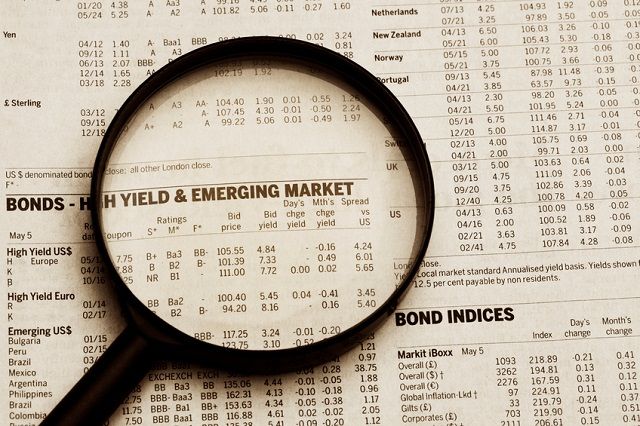The sell-off in emerging markets shows no sign of abating as the political stalemate in Italy panics markets.
It’s been a rough ride for EM debt this year as 10-year US Treasury yields rise and the US dollar strengthens. The JP Morgan Emerging Market Bond Index (EMBI) has fallen more than 4% since the start of April.
“It’s been fairly cataclysmic,” said Richard Hodges, Head of Unconstrained Fixed Income, Nomura Asset Management.
Nonetheless, most European fund selectors surveyed in Q1 2018 planned to hold or increase their investments in the asset class over the 12-month period to end March 2019, according to by Last Word Research.
Oil and Treasuries
“The driver of everything will be US bond yields,” Hodges continued. “If you call US bond markets correctly you call EM debt right.”
The yield on the benchmark 10-year Treasury note was lower on May 29 at about 2.8%, amid geopolitical jitters.
“If US Treasury yields go down significantly then government bond yields will be lower everywhere.”
Another factor is the price of crude oil which has rallied this year. Brent crude, the global benchmark, was trading at about US$76 on Tuesday – a rise of about 15% since January.
“The emerging market countries that look attractive export a of lot of oil and will benefit from the rise in crude prices,” Hodges said.
Leading emerging market exporters include Brazil and Columbia in Latin America and Indonesia and Malaysia in Southeast Asia.
Egypt and Argentina
Another overlooked bright spot may be Egypt, said Hodges. Standard & Poor’s upgraded the North African country’s credit rating from to B this month (from B-) following upgrades by other rating agencies on the back of economic growth and moderating inflation.
Ten-year Egyptian government bonds yields fell 11% to 14.2% in late-February before rising to 15.3% by late May.

“From my perspective there was no real reason why Egypt’s should suffer. Its currency is relatively stable. [The market sell-off] has created a great entry opportunity,” Hodges said.
Argentina, meanwhile, has seen investment pour into the country since the election of market-friendly President Mauricio Macri in 2015. It’s US dollar-denominated 100-year bonds issuance last year was heavily oversubscribed. But as the country grapples with high inflation and large trade and fiscal deficits Macri has opened talks with the IMF to help tackle its economic problems.
The Argentine peso has fallen 25% against the US dollar since the start of the year.

“It does not take much to drive emerging currencies weaker and that begins to form a vicious circle,” Hodge said. “But is has been overdone. By going to the IMF it should give Argentina some stability for their currency and their debt markets.”
However, David Roberts head of global fixed income at Liontrust remains unconvinced about the prospects for Latin America’s third largest economy.
“Some people seem to believe that Argentina calling in the IMF will end well but as we know that is often not the case. The IMF is notorious for demanding its pound of flesh,” he said.
Hope and expectation
Roberts said he expects the worst is yet to come regarding emerging market debt.
“The big hope for emerging markets at the moment is that the US doesn’t raise rates too fast, which is more a triumph of hope over expectation,” he said.
Seventy five percent of professional investors surveyed by NN Investment Partners in March said they expected fundamental economic drivers in the emerging market debt sector will improve over the next two to three years and as a result planned to increase allocations to the asset class over the next 12 months.
“For all the soothsayers saying emerging markets will be different this time because there is a better political balance and spread of risk if you look at the fundamentals you don’t have to probe too deep to be somewhat concerned,” Roberts said.
“Emerging markets have become incredibly expensive particularly in debt because there has been lot of money, especially from US mutual funds, chasing a bit of income. And now that we see US Treasuries paying close to 3% I think a lot of people are going to short emerging markets and buy US Treasuries.”
Hodges, however, said despite the risks from volatility and interest rate rises, targeted exposure to certain emerging markets – such as India, Indonesia, Argentina and Egypt – could reap attractive medium to long-term rewards.
“It depends on what your time horizon is,” he said. “If you’re looking for a return over the next three months you are going to have some measure of volatility. However, if you’re looking at where you are going to deliver returns over the next 12-18 months and how you are going to deliver them then I would suggest EM debt still represents a significant opportunity.”







